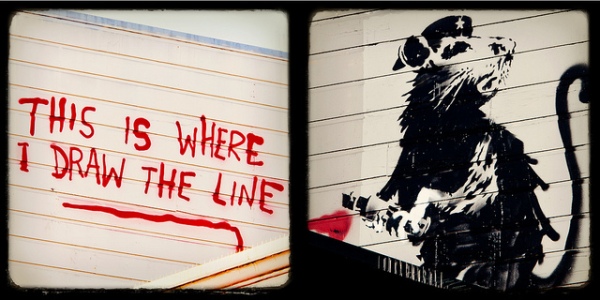I had a lot of fun today reading geography. (Yeah, I am still stuck with it. Tomorrow though, hopefully, I will move on to history and given that I quite like history, I am hoping to cover up the backlog rather quickly.) What I particularly enjoyed in geography was the introduction to a few interesting terms which curiously I had never read about before. I should have but well, I didn’t. Or maybe I did read about them but by now I might have forgotten which, to be honest, doesn’t seem much likely for these are rather fascinating terms.
Which terms, you may ask? Well, there are a lot of them but I would like to draw your attention to three in particular. These are soil creep, river beheading and erratics. Definitions are given along side. To see the full concept with imagery, click on the links.
Soil Creep: the slow downward progression of rock and soil down a low grade slope; it can also refer to slow deformation of such materials as a result of prolonged pressure and stress. Better known as Downhill Creep or commonly just Creep.
River Beheading: a geomorphological phenomenon occurring when a stream or river drainage system or watershed is diverted from its own system, and flows instead down the bed of a neighbouring river system. Also called stream capture, river capture, or stream piracy.
Erratics: A glacial erratic is a piece of rock that differs from the size and type of rock native to the area in which it rests
I like the way the geographers and the geologists named these terms. They all have a nice touch to them which makes knowing and learning about them all the more fun.
I had also heard a lot about the hanging valleys, maybe as a direct association in my head to the ‘Hanging Gardens of Babylon’, which a) if I were to write about will take a separate post in itself and b) I don’t know why my brain associates hanging valleys to the Hanging Gardens of Babylon except for the obvious ‘hanging’ connection but it does.
If you are curious, a hanging valley is is a shallow valley carved by a small glacier and thus the elevation of the valley floor is “hanging” high above the elevation of the valley floor carved out by the larger glacier.
As for the Hanging Gardens of Babylon, they were one of the seven wonders of the ancient world, and the only one whose location has still not been identified. There’s a nice hand engraving of the same done in the 19th century given below. Have a look. If you are curious, read more about it here.
So, there you have it. I don’t know about you and you can say what you will, but I must say this in conclusion – when it comes to naming terms, geographers have got style.
To the geographers then, may they keep naming features interestingly.

